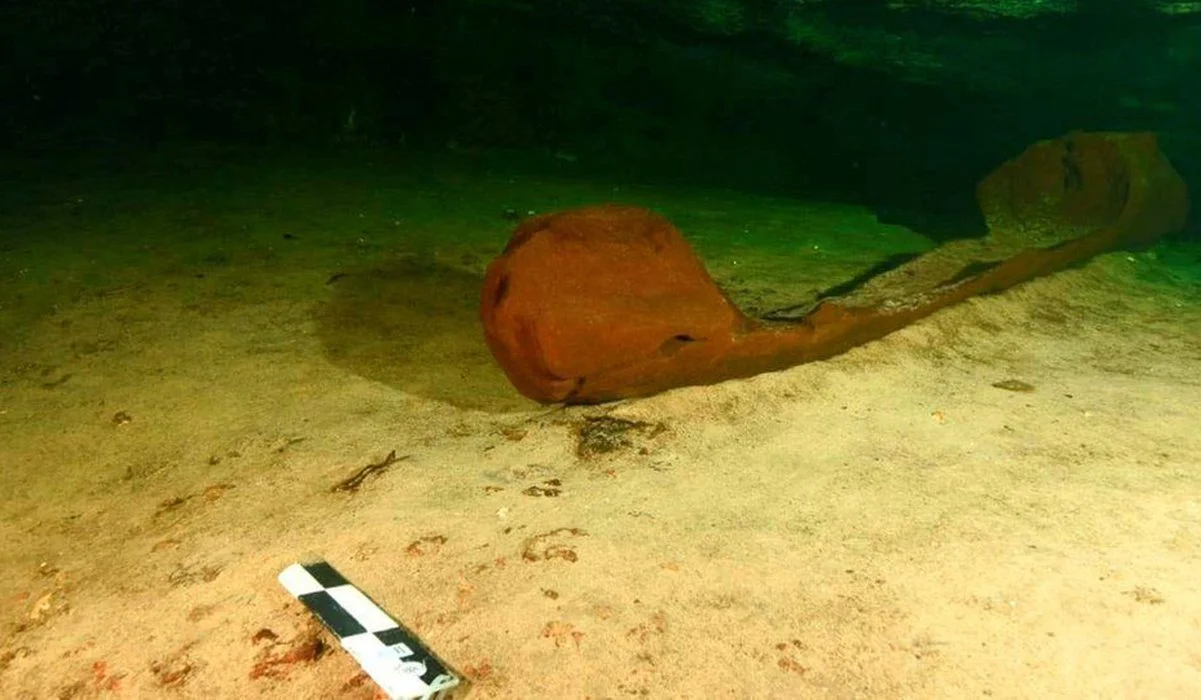Underwater Archaeologists have discovered a Maya canoe during works for the Maya Train, a multi-billion-dollar project through five southern Mexican states.
Works were undertaken at a site called San Andrés near the ruined Maya city of Chechen Itza, which has been under the protection of the National Institute of Anthropology and History (INAH) since the site has been under threat from looters.
The team identified that the original water level of the cenotes was around a meter beneath the present surface, leading them to a cave opening that containing a carved hardwood tree trunk (a type of platform canoe).
The canoe has been dated to around AD 830-950 towards the end of the Maya civilisation’s golden age, and measures 1.6 metres in length. The team speculates that it was likely used for extracting water from the cenotes, or the depositing of offerings during sacred Maya rituals.
Helena Barba Meinecke, head of the Yucatan Peninsula Office of the Sub-Directorate of Underwater Archaeology said: “This is the first canoe of this type that is complete and so well preserved in the Mayan area, and there are also fragments of the oars.”
Further studies using dendrochronology will be applied to date the age of the canoe, in addition to studies of the sediment where it was found, using boreholes to define the stratigraphy of the environment.
Header Image Credit : INAH





